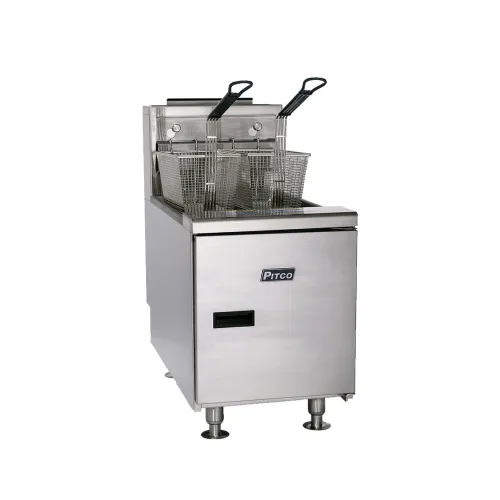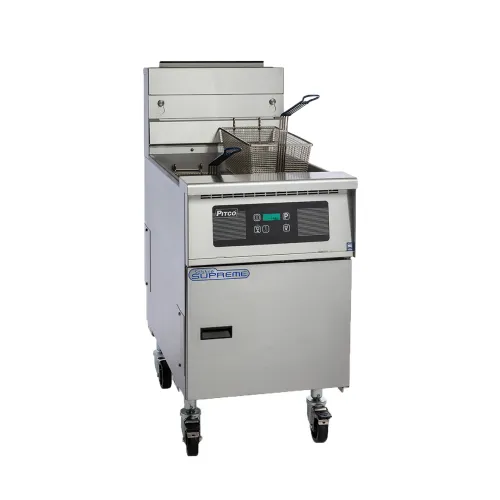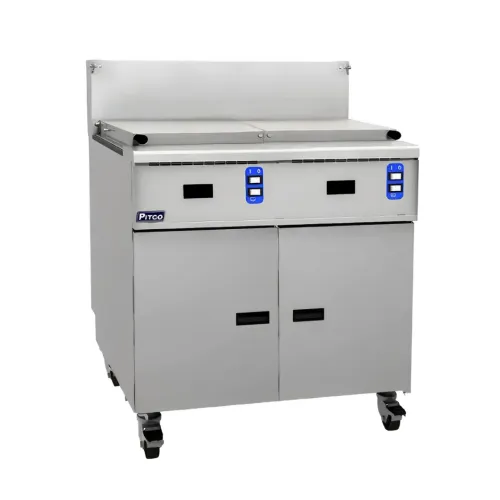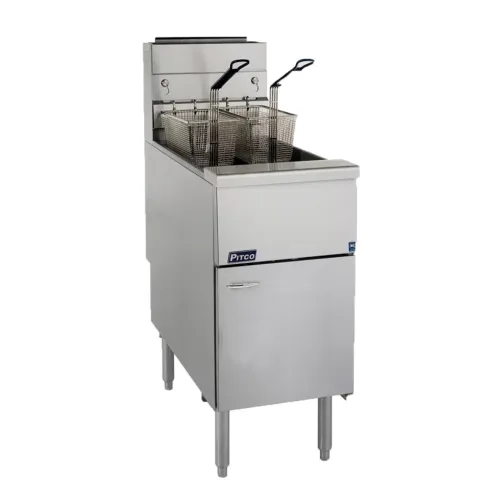
Penggorengan tampaknya sudah ada sejak awal memasak dalam wadah. Pada masa lalu, ditemukan bahwa daging yang diletakkan di atas piring tanah liat di depan api terbuka mempertahankan sari-sarinya, dan umumnya lebih lezat dan memuaskan.
Lemak alami di dekat permukaan daging hewan mencair terlebih dahulu ke dasar piring, dan proses penggorengan pun terjadi. Dari situ, hanya tinggal selangkah lagi untuk menerapkan panas di bawah piring, dan makanan dimasak dalam akumulasi lemak alami tersebut. Tidak lama kemudian, seorang jenius menemukan bahwa makanan yang memuaskan bisa disiapkan dengan lemak yang sebelumnya sudah dipanaskan dan dikumpulkan, sehingga metode menggoreng dengan lemak dalam jumlah besar menjadi praktik yang umum. Wajan dangkal awalnya, seperti spider atau fry pan, secara bertahap menjadi lebih dalam, hingga pot French Fry menjadi peralatan standar dapur.
Pada tahun 1918, J.C. Pitman and Sons, produsen peralatan hotel dan restoran, saat mencoba menemukan metode penggorengan yang lebih baik, membuat beberapa penemuan penting. Salah satunya adalah bahwa jika partikel kecil makanan yang biasanya tenggelam ke dasar pot French Fry (di mana mereka mengumpul dan terbakar) bisa dijauhkan dari panas yang intens di bagian bawah wajan, kualitas makanan yang digoreng bisa sangat ditingkatkan. Dari prinsip dasar inilah, Pitco Frialator diciptakan dan dipatenkan. Ini membawa perubahan total dalam metode penggorengan dalam. Medium lemak dipanaskan oleh tabung yang mengalir melalui pusat wadah lemak. Konstruksi ini memungkinkan semua sedimen dari makanan yang digoreng menetes di bawah tabung pemanas ke zona dingin, sehingga tidak bisa terbakar dan merusak lemak penggorengan.
Pentingnya konstruksi ini adalah pengurangan biaya lemak, yang jauh melebihi biaya awal peralatan, depresiasi, dan pemeliharaannya. Berkat ribuan Pitco Frialator yang sekarang digunakan di seluruh penjuru negeri, penggorengan dalam benar-benar telah menjadi sebuah seni.








